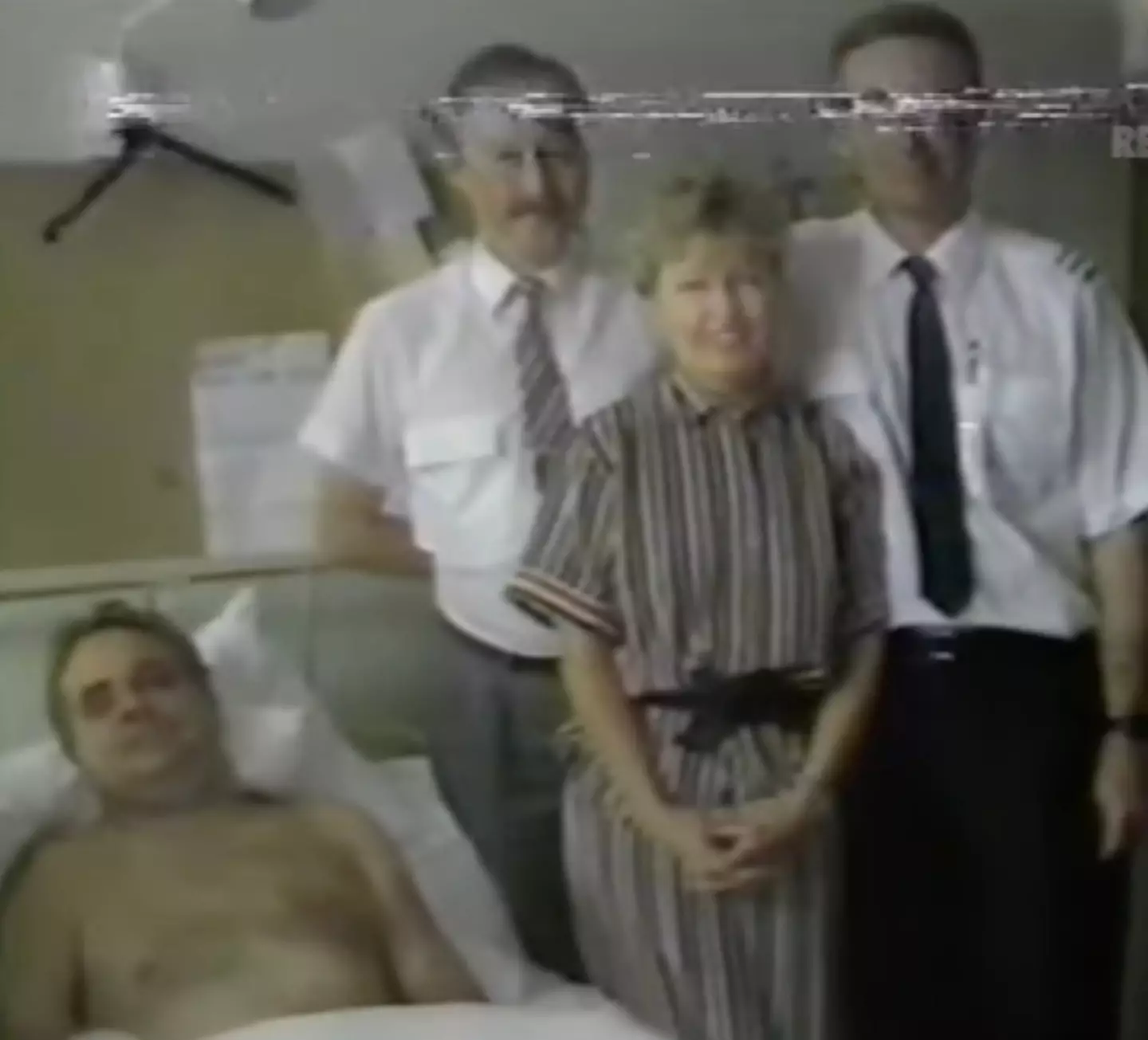
Tim Lancaster was sucked out of a plane
A terrible fate befell a British Airways pilot three decades ago, and so many people don’t know anything about it.
But the most shocking thing? This horror show actually turned out to become something of a miraculous landing and story of survival, making not just one man, but two men heroes within the space of just half an hour.
The shocking incident at 17,000ft
On June 10, 1990, flight British Airways 5390 was all but half an hour into its Birmingham to Málaga flight on the BAC One-Eleven aircraft when disaster struck.
Captain Tim Lancaster was manning the cockpit along with his First Officer Alastair Atchinson and as the plane gained altitude, things were looking well.

However, it was at this moment that the left cockpit windscreen suddenly blew out, creating rapid decompression at a dangerous 17,300-foot position in the sky.
This explosive decompression sucked all of the stable air from the pilot’s quarters, and horrifyingly, it also sucked Lancaster from his seat too, leaving him to get stuck halfway outside of the aircraft.
The crew who desperately tried to save him
The horror show was just getting started.
As Lancaster was incapacitated and his torso was dangling from the plane, while his legs were stuck inside of the craft, air steward Nigel Ogden walked into the ordeal when he entered the cockpit.
With the control column pushed forwards, as the captain was pulled from his seat, the plane dipped towards the right and began to nosedive.
Immediately, he knew he had to do something, and grabbed hold of Lancaster’s waist and refused to let go.
That’s when chief steward John Howard rushed in and removed the debris of what was left of the cockpit door off the navigation panel, clearing the way for co-pilot Atchison to take back the controls of the plane.
As all of this was unfolding, the plane was descending at 4,600 feet per minute, and, to avoid a mid-air collision, he had to stabilise the air pressure to bring oxygen back into the cabin and level out the plane.

Miraculously, he did this within 148 seconds and brought to plane back to 11,000 feet.
Another cabin crew member called Simon Rogers took it in turns to ensure that Lancaster was secured and also helped to calm passengers, who had heard the giant bang as the windscreen was ripped off.
How pilot survived against all odds and injuries he sustained
Lancaster was flailing outside of the aircraft for 22 minutes until the First Officer was able to make an emergency landing in Southampton, and within that time, he sustained a number of injuries to his body.
Recalling the horrid story, Ogden told the Sydney Morning Herald: “I whipped round and saw the front windscreen had disappeared and Tim, the pilot, was going out through it – he had been sucked out of his seatbelt and all I could see were his legs.
“I jumped over the control column and grabbed him round his waist to avoid him going out completely.
“His shirt had been pulled off his back and his body was bent upwards, doubled over round the top of the aircraft.”
The pilot’s head repeatedly banged against the fuselage as Howard grabbed his belt to ensure he did not fall from the craft, and this was when Ogden was scared by what he saw.
Ogden added: “Most terrifyingly, his eyes were wide open. I’ll never forget that sight as long as I live.
“God knows how, but while all this was going on, Alastair managed to get the plane under control.

“I let John take over in the cabin and I ran back to look after the passengers, who had all heard the bang, my poor colleague Sue Prince had been looking after the plane on her own, bless her.
“I screamed: ‘Brace! Brace!’ Everyone knew the seriousness of the situation then.
“The pressure on Alastair must have been tremendous – everybody’s life was in his hands. But he brought that plane down perfectly.”
The National Geographic’s Air Crash Investigation (aka Mayday) retold the story in its Season 3, Episode 2 where Ogden described Lancaster’s condition.
He said: “He was going blue, and his eyes were wide open. I thought he was dead. But we weren’t going to let him go.”
While not dead, Lancaster did sustain broken bones, frostbite, and shock before being rushed to hospital from Southampton Airport.
What caused the pilot to be sucked out of the window
Sadly, this all came down to a maintenance error just 27 hours before the incident occurred.
According to reports, 84 of the 90 bolts holding the windscreen to the craft were the wrong size after they underwent a routine replacement.
So, when the craft gained altitude, 87 bolts flew from the windscreen and eventually, the screen also blew off without the necessary support.
This led to widespread aviation reform, and it’s even used as a case study in training for pilots and cabin crew around the world.
During NBC’s coverage of the incident, reporters asked Lancaster if he was scared of dying.
“It did cross my mind,” he admitted. “For a moment or two.”
“What I remember most clearly was the fact that I couldn’t breathe because I was facing into the airflow,” Lancaster also said in the 2005 documentary Mayday.
What happened to pilot Tim Lancaster and hero steward Alastair Atchinson
As for Lancaster and Atchinson, the Captain went on to make a full recovery but did not lose his love of piloting as he returned to flying within just 5 months.
He then went on to fly for EasyJet before retiring from the industry in 2008 and never gave public interviews about his ordeal, but did go on to be awarded the Queen’s Commendation for his incredible survival story.
Similarly, Atchison was given the Polaris Award for exceptional airmanship and Ogden was also honoured with the Queen’s Commendation for Valuable Service in the Air.
Featured Image Credit: National Geographic





